Twenty-Four Floral Messengers: An Illustrated Guide to Solar Terms’ Blossoms (Ershisi Fan Huaxinfeng Tuce)
Overview
This 24-panel silk album, painted by Dong Hao (董诰, 1740–1818), a renowned Qing Dynasty court artist and statesman, documents China’s traditional phenological calendar through 24 flowers associated with seasonal winds (huaxinfeng 花信风) from Minor Cold (Xiaohan) to Grain Rain (Guyu). Commissioned during the reign of Emperor Jiaqing (嘉靖,1796–1820), each panel pairs botanical illustrations with imperial poetry, blending scientific observation with lyrical elegance. Now housed in Taipei’s National Palace Museum, the work embodies the Qing court’s fusion of art, agriculture, and cosmology.
Structure & Symbolism
- Calendar Framework:
- The album spans 8 solar terms (节气), each divided into 3 pentads (候, 5-day periods), totaling 24 flowers:
Solar Term (节气) Pentad 1 Pentad 2 Pentad 3 Minor Cold Plum Camellia Narcissus Major Cold Daphne Orchid Sweet Osmanthus Spring Begins Winter Jasmine Cherry Blossom Magnolia Rain Water Rape Flower Apricot Plum Blossom Awakening Insects Peach Kerria Rose Spring Equinox Crabapple Pear Magnolia Clear Bright Paulownia Wheat Flower Willow Catkin Grain Rain Peony Rosa multiflora Chinaberry - Each flower symbolizes a natural rhythm, such as plum blossoms (resilience in snow) and peonies (imperial prosperity).
- The album spans 8 solar terms (节气), each divided into 3 pentads (候, 5-day periods), totaling 24 flowers:
- Artistic Technique:
- Executed in gongbi (工笔, meticulous brushwork) with malachite green and gold accents, Dong Hao’s paintings emphasize botanical accuracy while evoking Tang Dynasty decorative traditions.
- Architectural elements (e.g., pavilions, rockeries) are rendered without linear perspective, prioritizing symbolic hierarchy over realism.
- Text-Image Dialogue:
- Emperor Jiaqing’s poems, inscribed in seal script, reinterpret classical texts like the Book of Documents (尚书) and I Ching (易经). For example:
- Plum Blossom Panel: “冷艷先舒冰雪中” (Amidst ice and snow, her cold beauty unfolds) links the flower’s endurance to Confucian moral fortitude.
- Peony Panel: “一枝獨冠百花王” (A single stem crowns the king of flowers) celebrates imperial authority through floral symbolism.
- Emperor Jiaqing’s poems, inscribed in seal script, reinterpret classical texts like the Book of Documents (尚书) and I Ching (易经). For example:
Cultural & Historical Context
- Huaxinfeng Concept:
- Translating to “floral message-bearing winds”, huaxinfeng reflects ancient agrarian societies’ reliance on phenological cues for farming and rituals. The term first appeared in Southern Tang texts like Shi Ji Guang Ji (岁时广记).
- Political Subtext:
- As a Grand Secretary and son of painter Dong Bangda (董邦达), Dong Hao used this album to align with Jiaqing’s Confucian revival policies, contrasting idealized natural order with Qing bureaucratic challenges.
- Comparative Legacy:
- Similar to European Hortus Sanitatis (medieval herbals), the album bridges art and science. Its structure influenced later works like Twenty-Four Solar Terms Poetry Scrolls (二十四节气诗卷).
Translation Strategy
- Key Terms:
- Retain pinyin for culturally specific terms (huaxinfeng, gongbi) with explanatory notes.
- Example: Ershisi Fan Huaxinfeng Tuce (二十四番花信风图册, Twenty-Four Floral Messengers: An Illustrated Guide to Solar Terms’ Blossoms).
- Poetic Adaptation:
- Preserve imagery while adjusting meter. For instance, the Peach Blossom poem “灼灼其華吐濃艷” becomes “Blazing blooms exhale their fervent hues”.
- Visual Glossary:
- Include a table mapping solar terms to flowers (as above) for clarity.
Artist Biography: Dong Hao (董诰, 1740–1818)
A pivotal figure in Qing art and politics, Dong Hao rose to become Grand Secretary under Jiaqing. His works, characterized by meticulous detail and symbolic depth, earned him the moniker “Little Dong” alongside his father, establishing the Dong family’s legacy in court art. Despite political turbulence, his albums like Floral Messengers became tools for advocating Confucian governance through aesthetic refinement.
Legacy & Modern Relevance
This album transcends botanical documentation, offering insights into:
- Environmental History: As a precursor to modern phenology, it reveals pre-industrial China’s ecological literacy.
- Cultural Identity: Flowers like plum and peony remain national symbols, perpetuating themes of resilience and prosperity.
- Art-Science Dialogue: Its blend of precision and poetry parallels Renaissance naturalism, inviting cross-cultural comparisons.

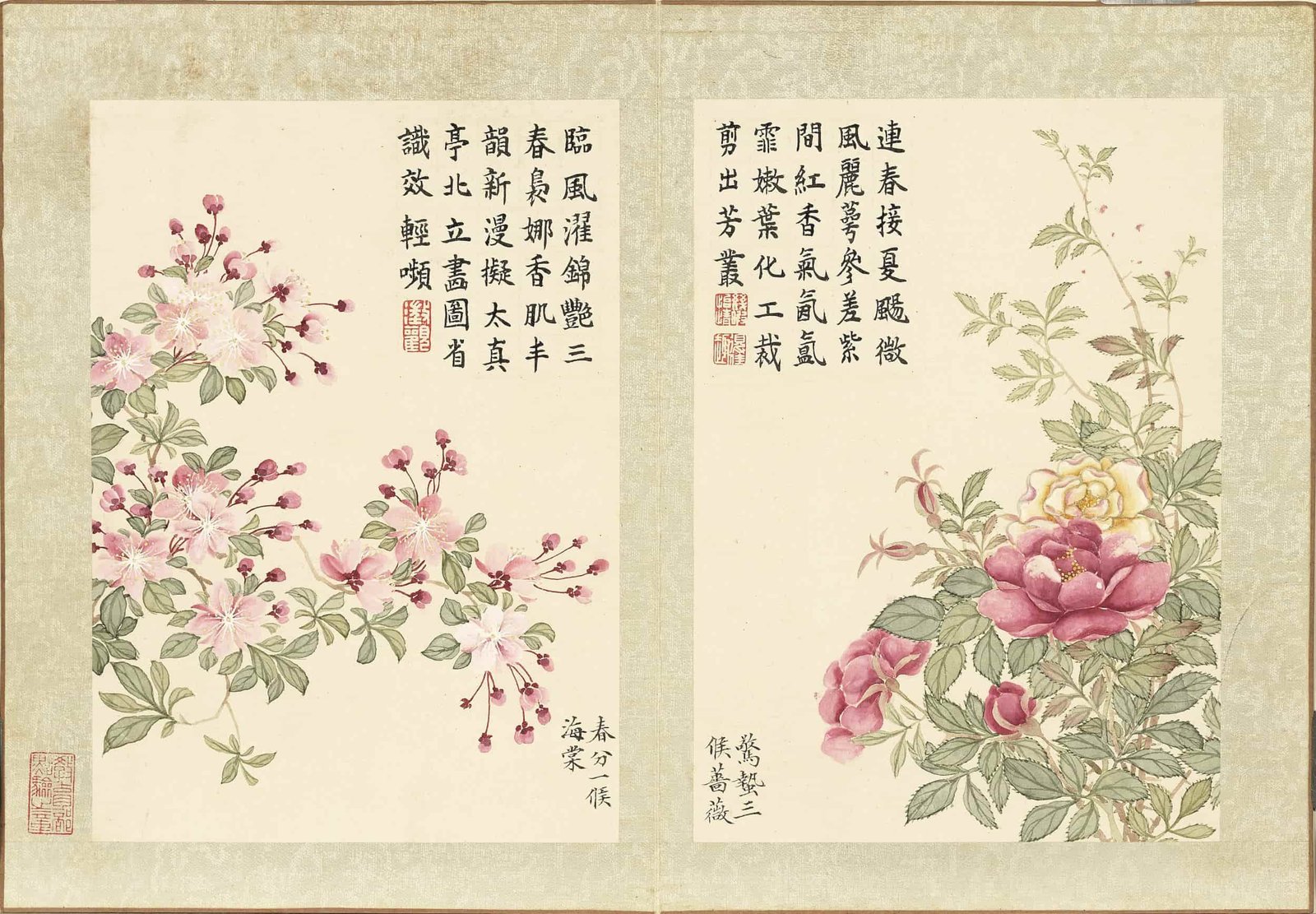
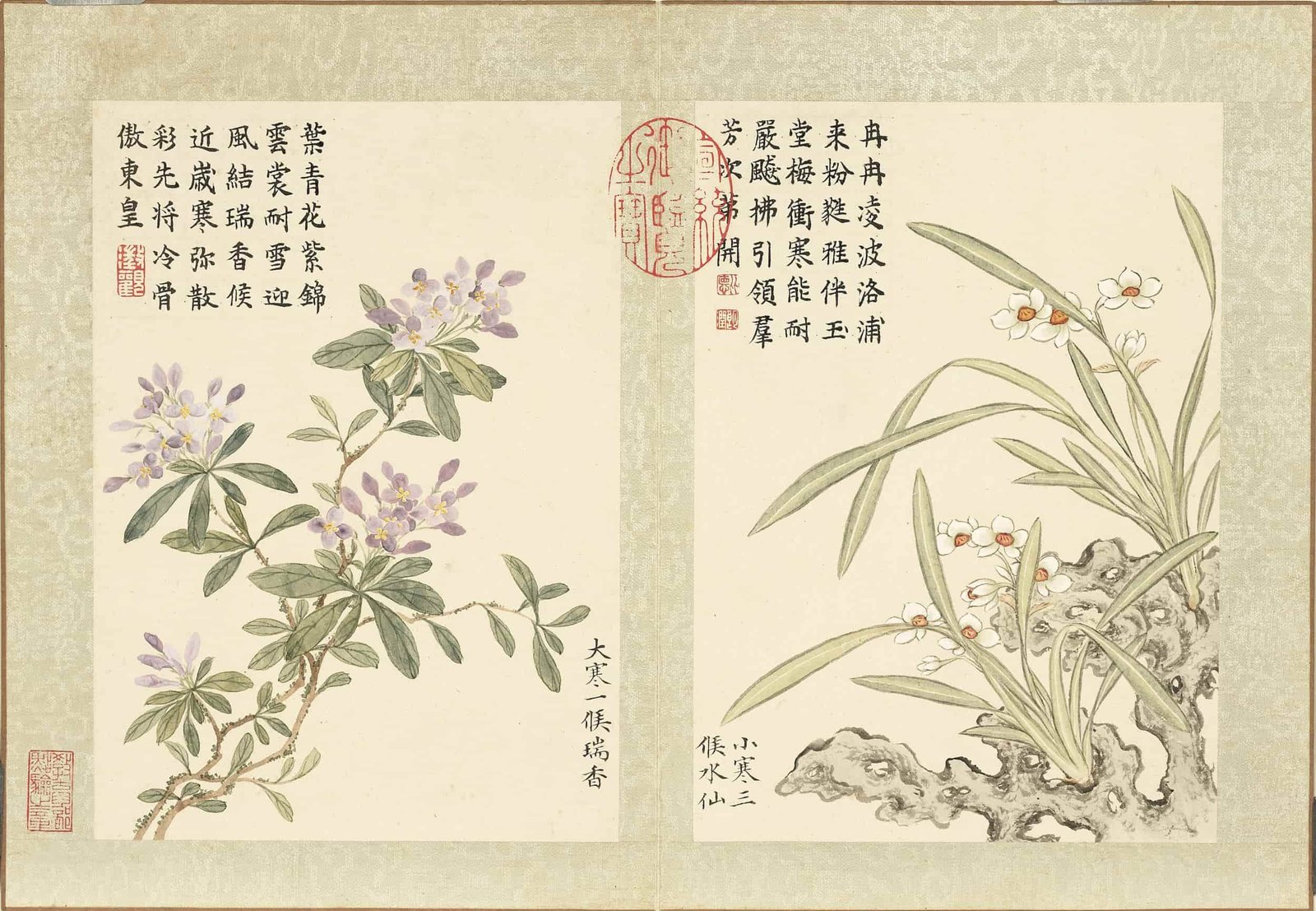
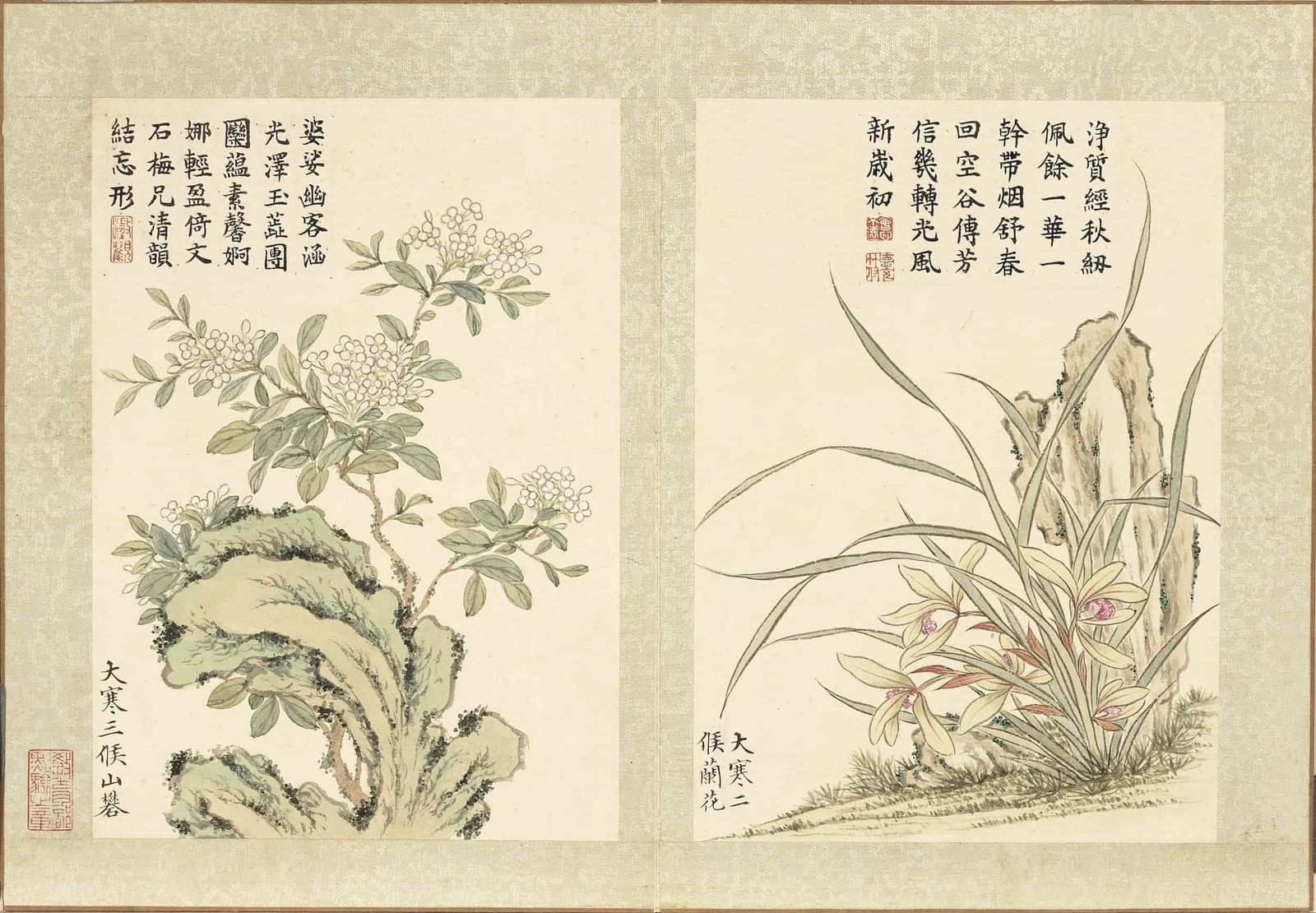
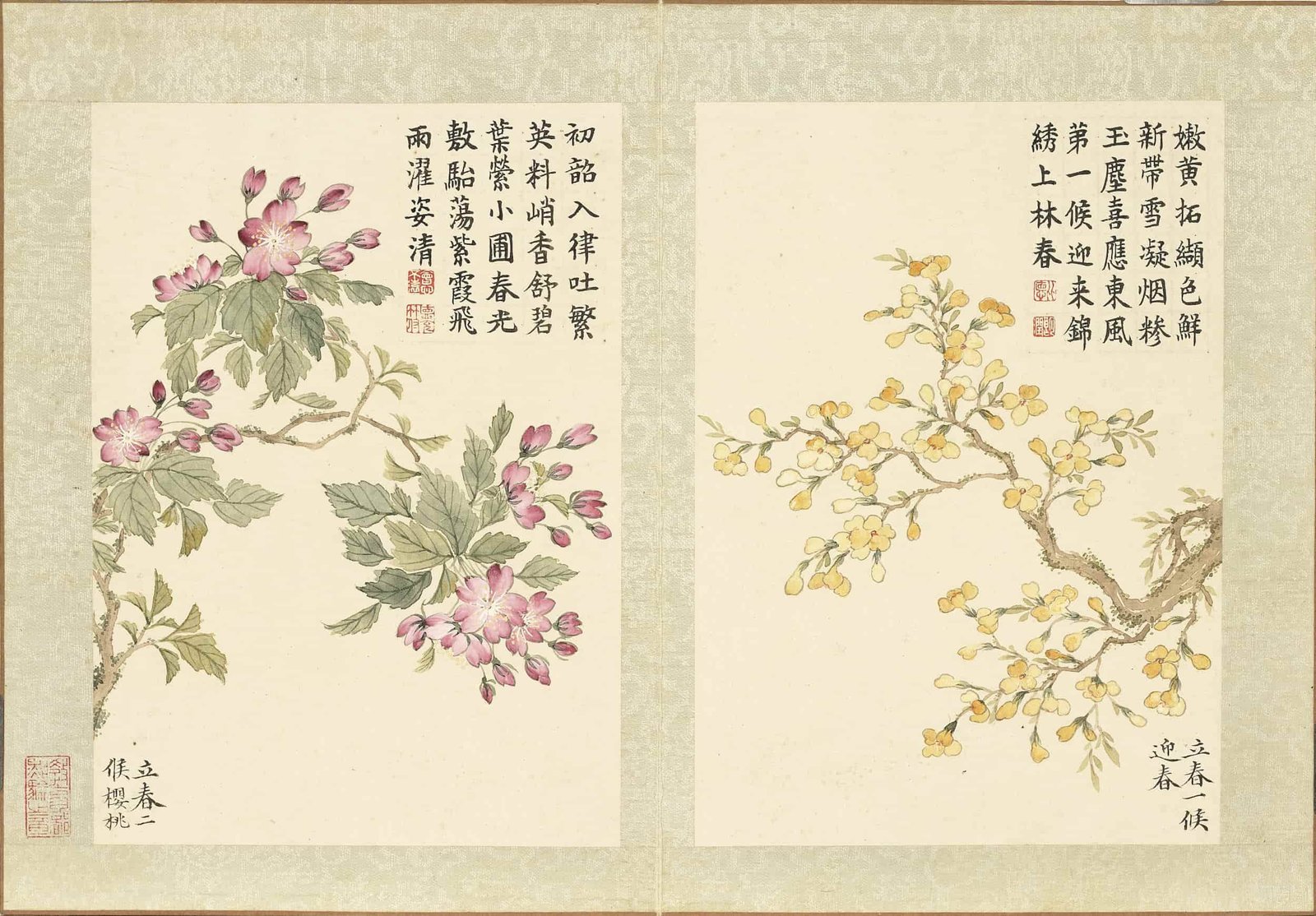
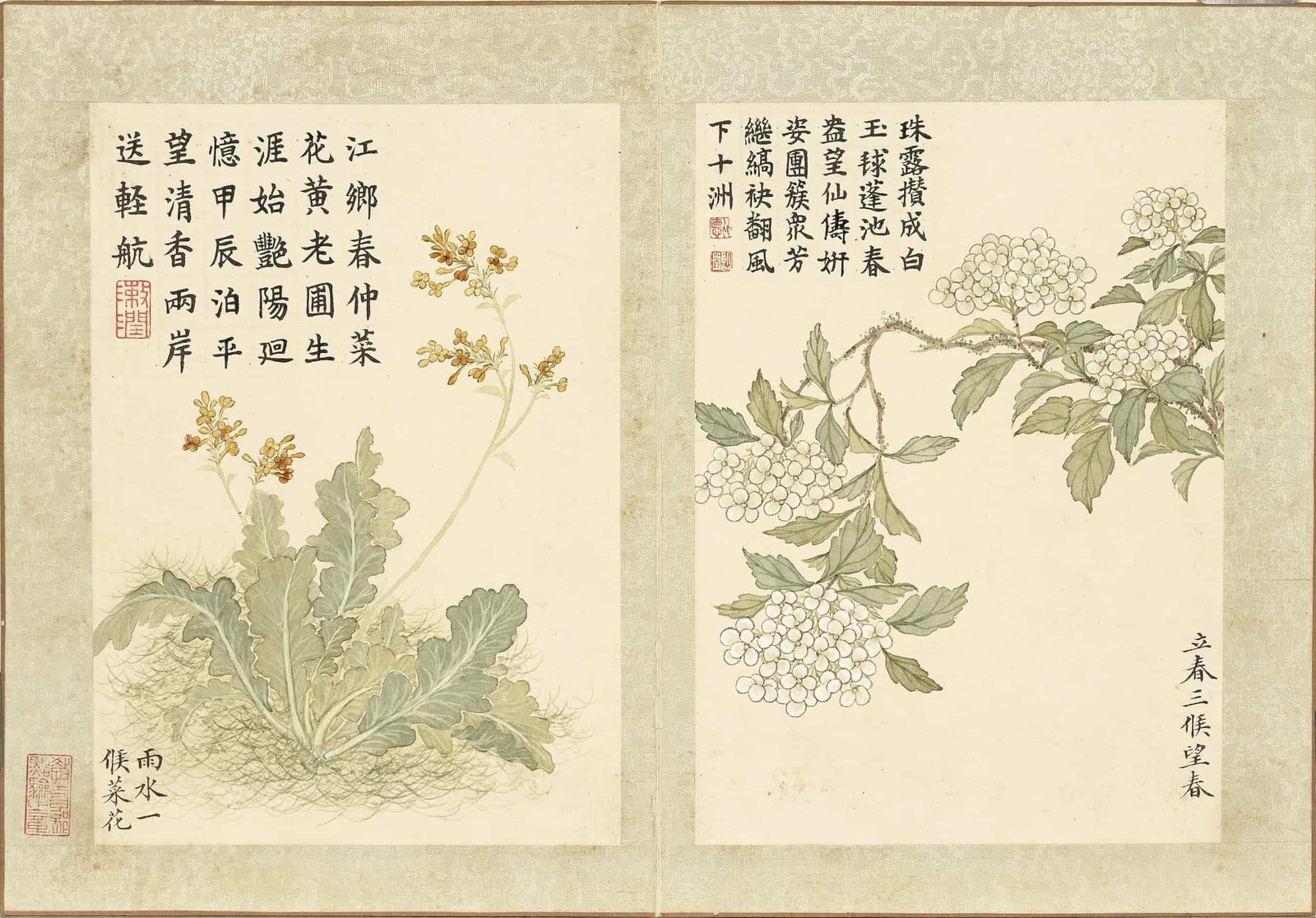
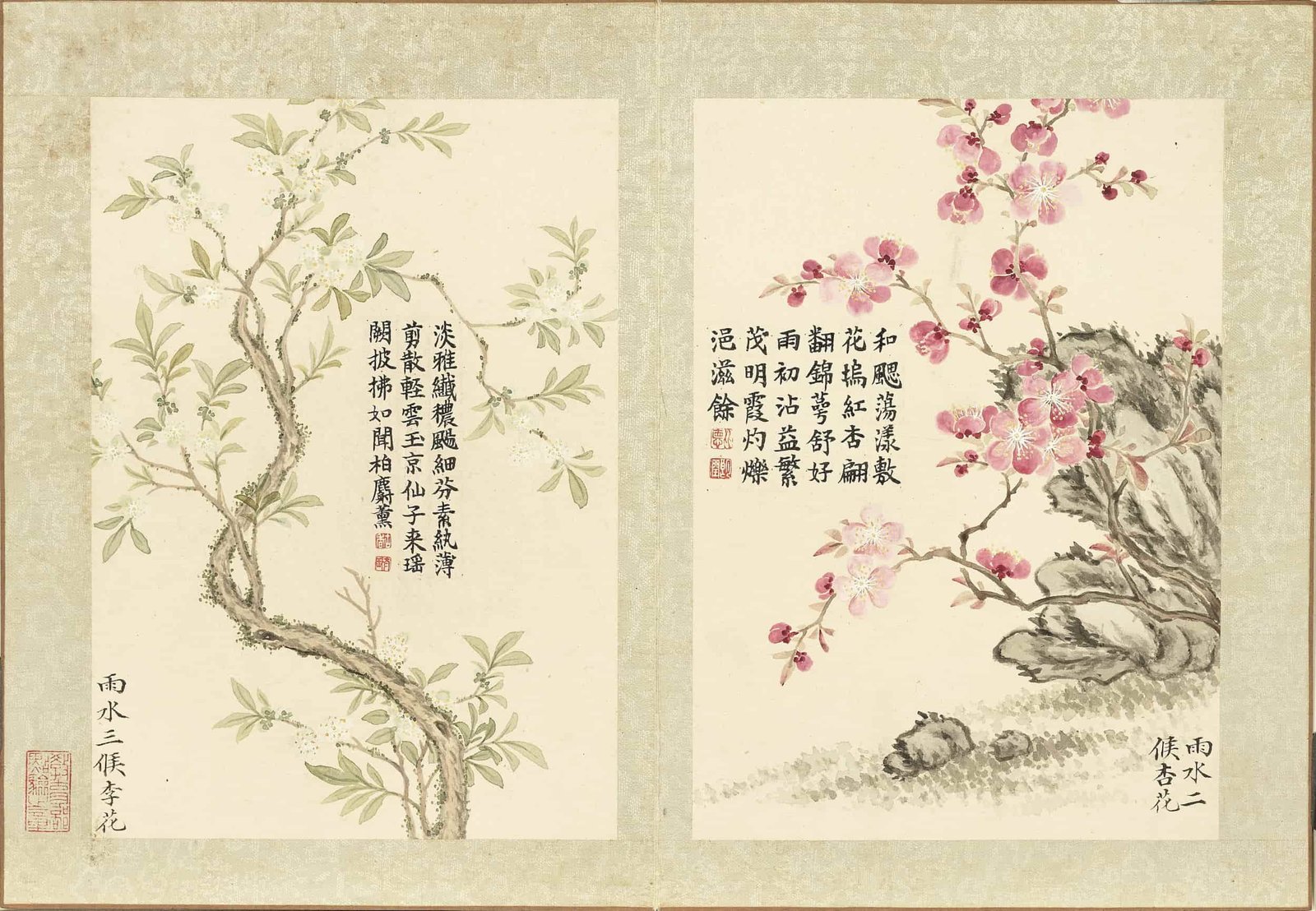
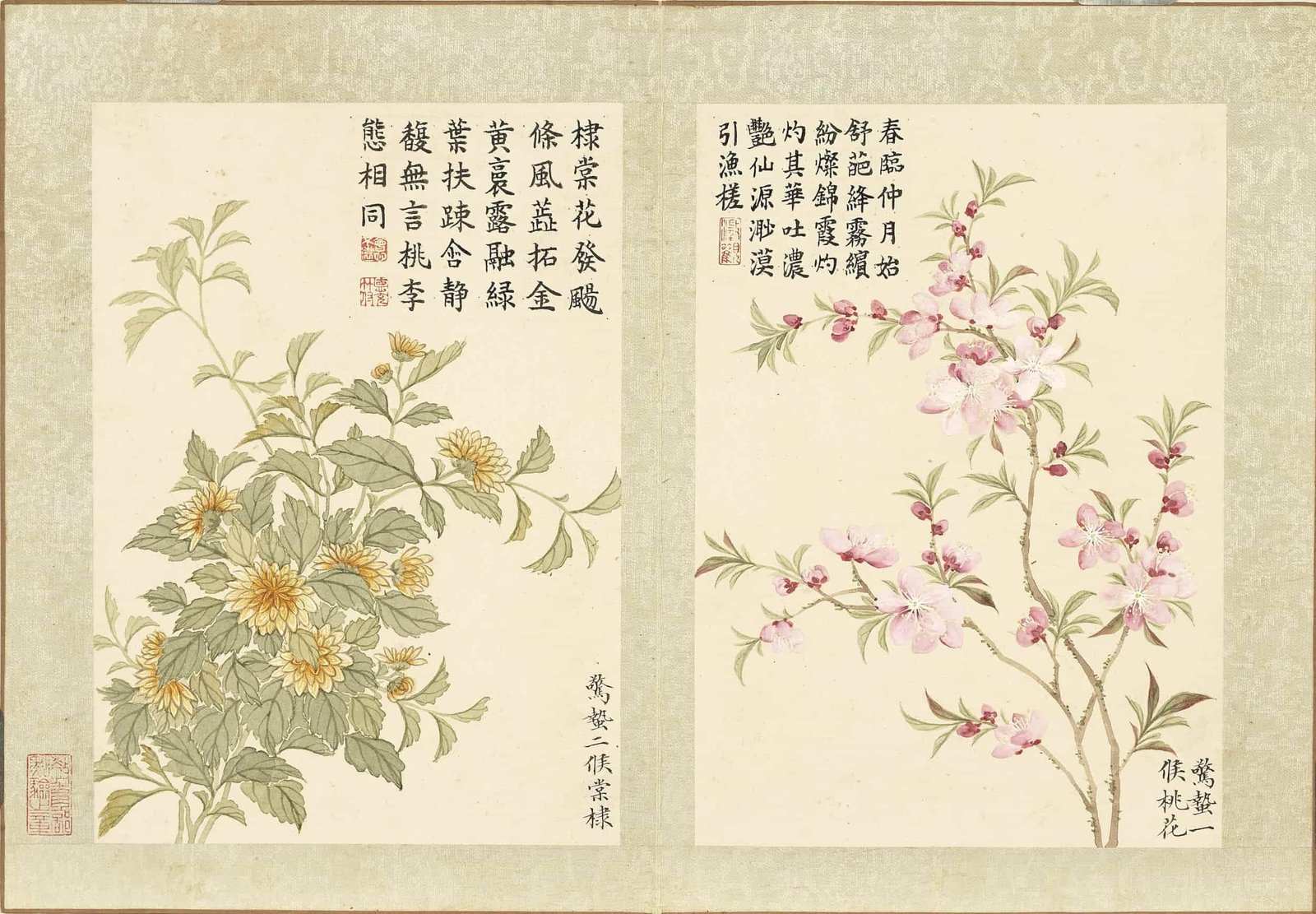
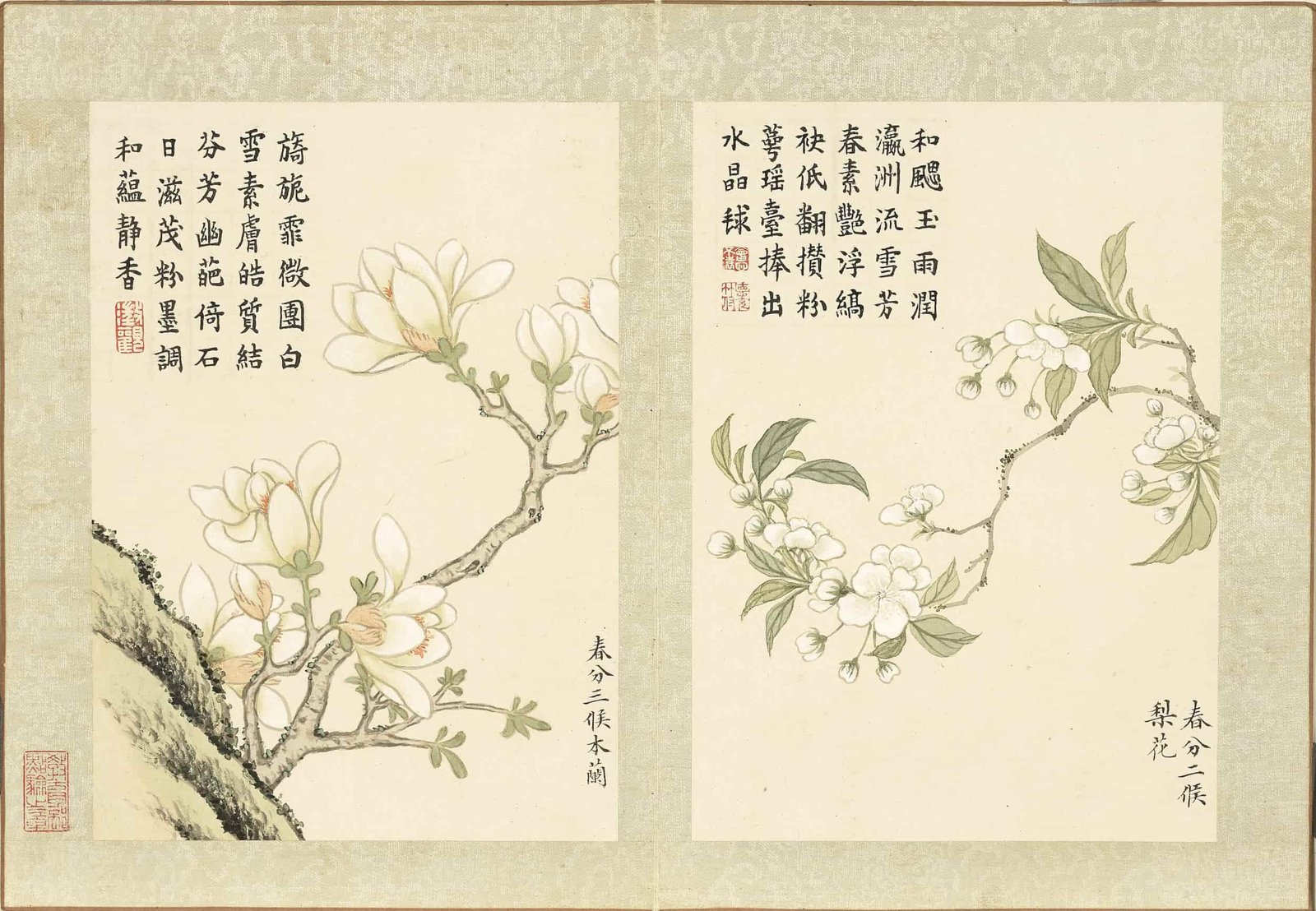
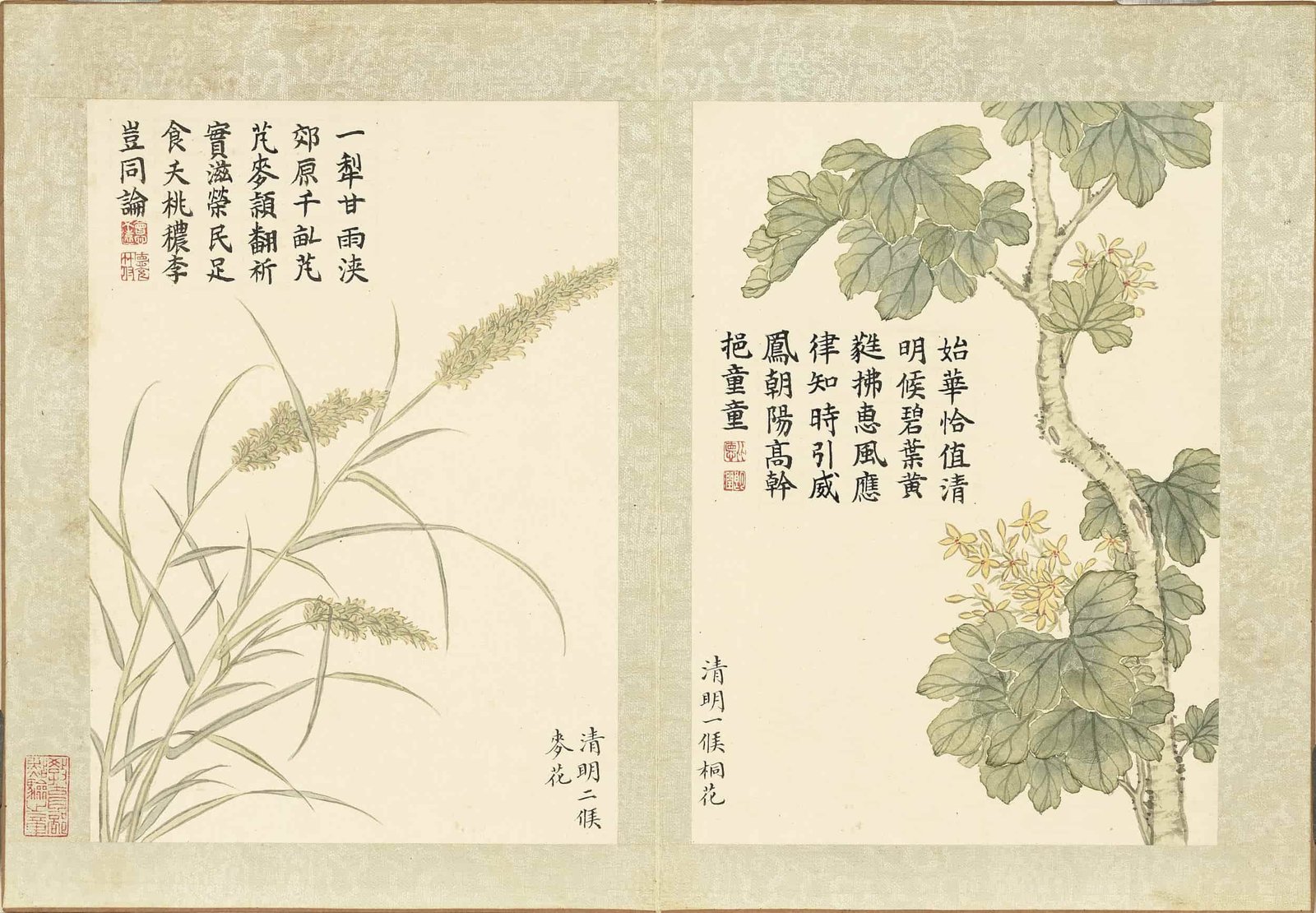
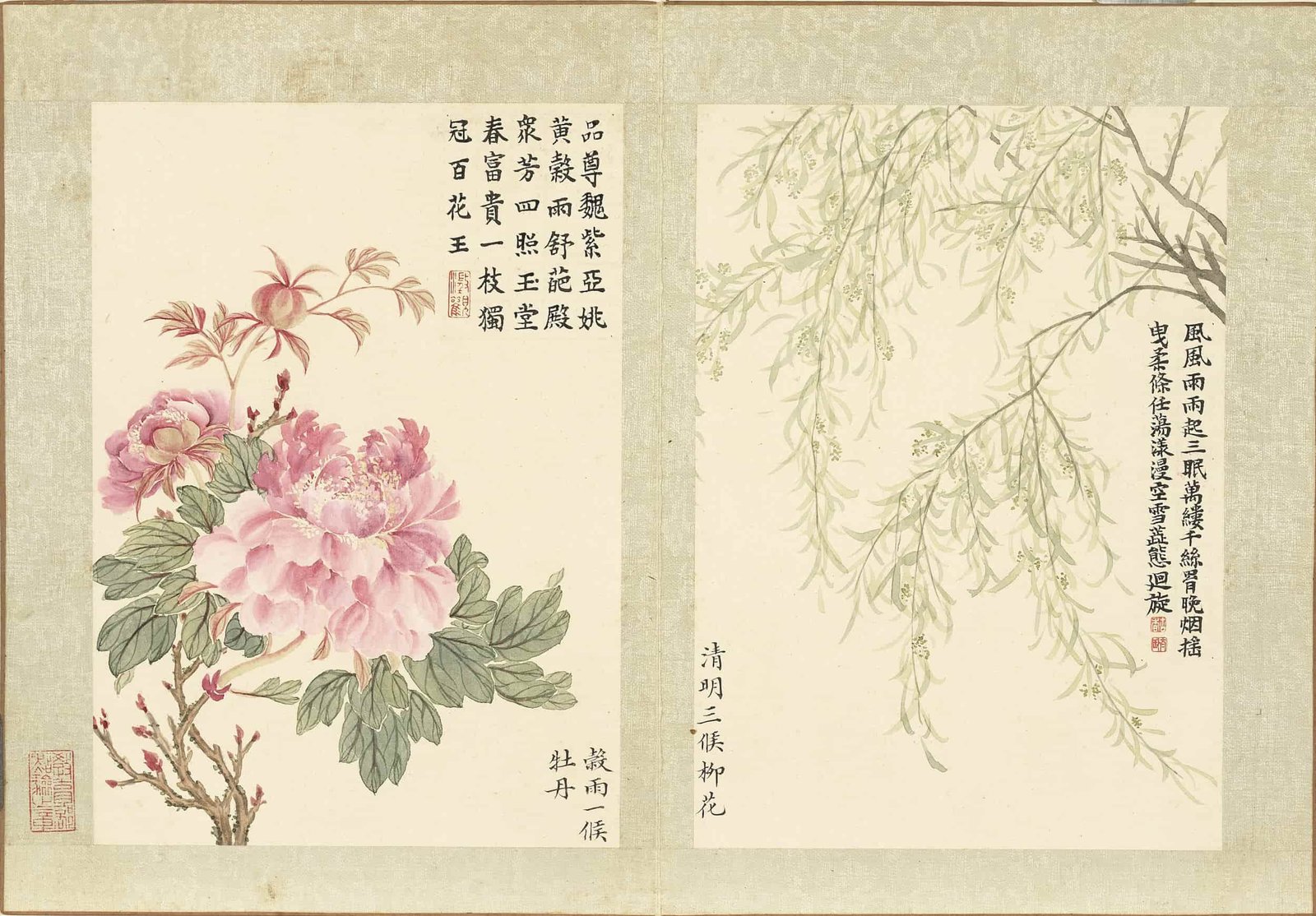
评价
目前还没有评价